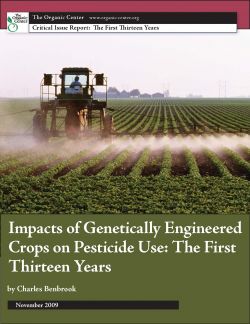By Samuel Fromartz
It's fashionable, or maybe just attention-grabbing, to argue that local and organic foods are elitist, the preserve of wealthy shoppers who are willing to dole out wads of
bills for a weekly fix of local, sustainable food at the farmers' market.
Perhaps if it's repeated enough, we'll actually believe it, and then
begin to spin yarns about the vast implications of this highly
disturbing trend.
James McWilliams takes this simplistic view over at the Times'
Freakonomics blog. If good, clean, food is elitist, he argues, then it leaves out
the vast majority of shoppers and thus creates a wedge in our communities. So you better watch out! Farmers
markets are secretly destroying your neighborhood.
In countering this ludicrous assertion, I'd first ask, Where is the
evidence that local foods are elitist? You won't find it in McWilliams diatribe. He just assumes it.
Sure, I see people who are well-off at the Dupont Circle FreshFarm
market in Washington (which is located in a high-income neighborhood). But I also see well-off people buying baby
clothes on the Upper East Side of Manhattan. I don't jump to the
conclusion that farm-fresh food or baby clothes are only sought by the
wealthy.
This issue actually came up when I was researching my book Organic
Inc. I had the notion firmly imprinted in my head that the typical
organic shopper was a 30-something, upper-middle class, Volvo-driving,
latte-swilling, yoga babe.
But try as I did to find the market-research to support that image, I could
not. In fact, the largest and most authoritative study on that issue
found that the median income of an organic shopper was right around
the national median. The Hartman Group, which studies such things and
sells their data in pricey reports to the food industry, has said that income is the least important factor in determining whether someone is an organic shopper or not.
Which is why you find penniless college kids eating organic vegan dishes. Now, programs are sprouting that double the value of food stamps at farmers' markets. And guess what? They are quite successful.
As it is, ethnically diverse groups are disproportionately represented,
Hartman found when studying the organic marketplace. Here's another factlet: one of the largest factors in determining organic food purchases was availability. What looks like a white, upper-middle class trend might simply be a function of availability. Or to flip the notion on its head, do low-income people prefer buying fast food and chips from corner stores, or are those purchases disproportionate because of the lack of alternatives? Access isn't the only issue here, but it is a big one.
Take the farmers' market I visited last weekend in Greenpoint
Brooklyn. Sure there were a fair amount of white hipsters and young parents with strollers but there were Latino and Eastern European
shoppers as well. "It's fresh?" asked one babushka eyeing a plump
sourdough loaf. Surveying the crowd, you would be hard-pressed to
describe it as upper-middle class.
In Washington, D.C., where I live, you see it too at farmers' markets
that straddle neighborhoods with diverse income groups, like Eastern Market. This market is not some homogeneous beast as
McWilliams assumes -- it's diverse because, it turns out, a lot of
people like good, fresh food from farms.
Here's the other thing about this community-wilting farmers' market fantasy
McWilliams concocts. Local food represents perhaps 2-3% of all food
sales (though farmers' markets are sprouting extremely fast and not just in upper-income zip codes). It's so minute it probably has less impact on a community than a public school gardening program.
But as farmers' markets continue to grow -- and there is no indication
that they won't -- they will likely add to communities simply by being a
gathering place, where people can interact, especially as access increases. In short, there is nothing inherently elitist about local food, which is why all effort should be made in increasing access across the income spectrum.
But following McWilliams' logic, a superstore would offer more
cohesion. They have the lowest prices. Low-income people can afford
it. Oh yeah, only one problem. You don't need a lot of other
businesses or even a Main Street when a superstore comes to town. You don't even need a lot of farmers. Just a few big ones. So
how would a superstore create community cohesion? By spinning it from a
fantasy determined solely by price.





